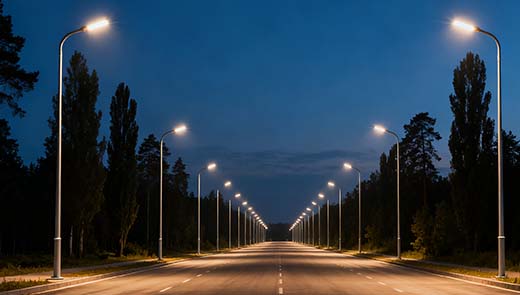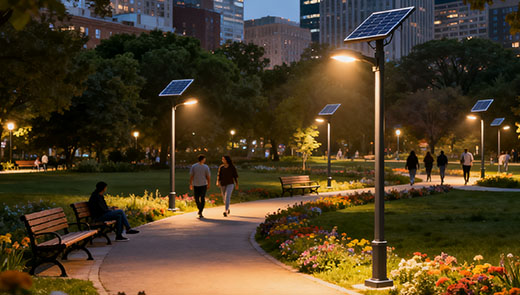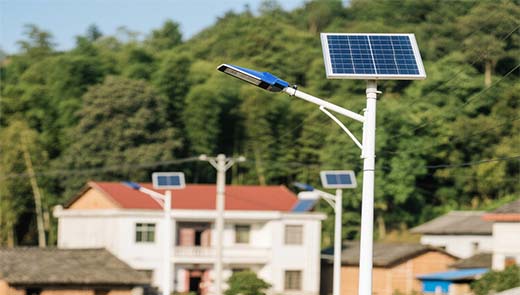300W Solar Street Light Charge Controller Selection Strategy
In a solar street light system, choosing a charge controller for a 300W solar panel is not simply a matter of matching specifications, but a comprehensive consideration of “efficiency, cost and environment”. As the core component of energy management, improperly selected controllers will not only lead to 15%-30% energy loss, but also shorten the nighttime lighting hours of street lights by more than 50%. PWM and MPPT controllers on the market have their own focus, how to choose according to the application scenarios (e.g., urban arterial roads, rural roads, northern cold areas)? In this article, we will unlock the key logic of scientific selection for 300W solar system from the aspects of technical parameters, scenario adaptation, and installation points.
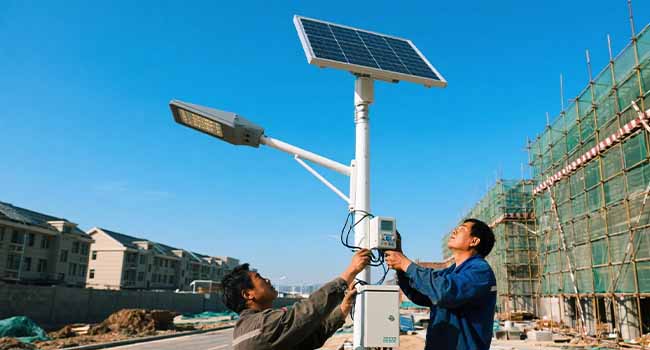
Introduction to charge controllers for solar systems
In solar power generation systems, charge controllers play the role of energy management “hub” -- from home energy storage to solar street lights. In solar power systems, charge controllers play the role of energy management “hub” - from home energy storage to solar street lights, they act as smart valves to precisely regulate the energy delivery from solar panels to batteries, avoiding overcharging that can lead to battery bulging and shortening of battery life.
Taking solar street light as an example, wrongly selected controllers may shorten the nighttime lighting duration by more than 50%, and cause 15%-30% energy loss at the same time. The mainstream controllers on the market are divided into pulse width modulation (PWM) and maximum power point tracking (MPPT) two categories: PWM controllers are lower cost, suitable for low-power scenarios such as rural solar street lamps, while MPPT controllers are more efficient, especially suitable for urban roads and other high-reliability solar street lamp systems or high-power applications. For 300W solar panels, the correct selection needs to start from the core parameters, which is directly related to the system's energy efficiency and equipment life.
Analysis of key parameters for 300W solar panels
Basic data on voltage and current
The standard electrical parameters for 300W solar panels are a rated voltage of about 18V (open-circuit voltage of up to 22V-24V) and a rated current of about 16.6A (calculated from 300W÷18V). These parameters are critical in a solar street light system - if the controller's current carrying capacity is less than 16.6A, the output power of the panel will be limited, as if it were a thin hose connected to a large faucet, and it will not be able to meet the energy requirements of the street light for continuous illumination at night. For example, when the rated current of the controller is only 15A, the actual output of the 300W panel will be limited to 180W, which will shorten the illumination time of the solar street light from the designed 8 hours to about 5 hours.
The golden rule of controller selection: 25% safety redundancy principle
The industry standard suggests that the controller current rating should be 25% higher than the solar panel current rating, which is especially important in solar street light scenarios. Take 300W panel as an example, 16.6A×1.25=20.75A, so we recommend 20A or 25A controller. Safe redundancy design can effectively cope with the over-rated output of solar panels under strong sunlight (e.g., summer noon may exceed the rated power by 10%-15%), and ensure that the solar street light can be fully charged before continuous cloudy and rainy weather. It also buffers current fluctuations during the later stages of battery charging to avoid frequent controller protection shutdowns - essential for unattended solar street light systems to reduce maintenance costs.
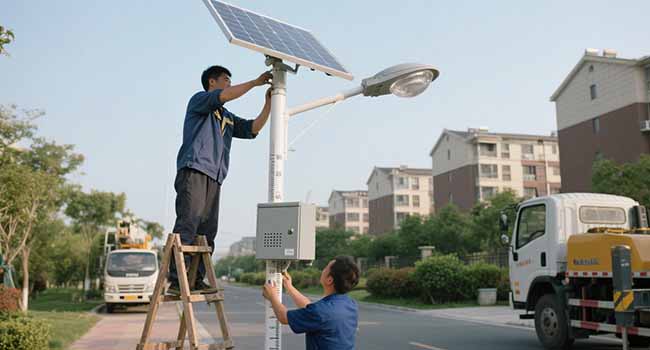
Choosing the right type of charge controller
PWM charge controller
Advantages:
Significant Cost Advantage: Purchasing cost is usually 1/3-1/2 of MPPT controller, which can reduce equipment budget by 30%-50% in small power solar street light projects such as rural roads and courtyard lighting. For example, 300W solar street light system using 25A PWM controller, compared with the same specification MPPT controller can save hundreds of dollars in cost, suitable for the limited financial budget of the village lighting renovation projects.
Simple structure and easy maintenance: the hardware design is streamlined, the wiring is intuitive (only need to connect the panel, battery, load), non-professionals can complete the installation through the manual. In the maintenance of solar street lights in remote areas, no professional tools are needed to troubleshoot (e.g. fuse replacement), reducing the difficulty of operation and maintenance and labor costs.
Stable efficiency in warm environments: In climatic conditions above 0℃, the efficiency is maintained at 75%-85%, and the absorbed voltage of the battery can be precisely maintained (e.g. 14.4V for 12V system). When the PWM controller is used for solar street light in southern region, it can ensure 8 hours of illumination all night long - measured data shows that in Guangzhou summer (average 25℃), 300W panel with 25A PWM controller, 200Ah battery daily charging capacity reaches 2.2kWh, which is enough for 30W street light to be on for 7.3 hours continuously.
Disadvantages:
Voltage difference sensitivity: when the voltage difference between the panel and the battery is more than 20%, the energy loss is more than 20%, it is not suitable for high voltage system (such as 18V panel + 24V battery).
Low efficiency in low temperature: efficiency drops to below 70% in -10℃ environment, easy to turn off the light early in northern winter.
Poor scalability: unable to support multiple panels in series or power upgrade, system expansion requires replacement of the controller.
Weak environmental adaptation: easy to fail in high humidity/high temperature scenarios, lower weather resistance than MPPT controllers.
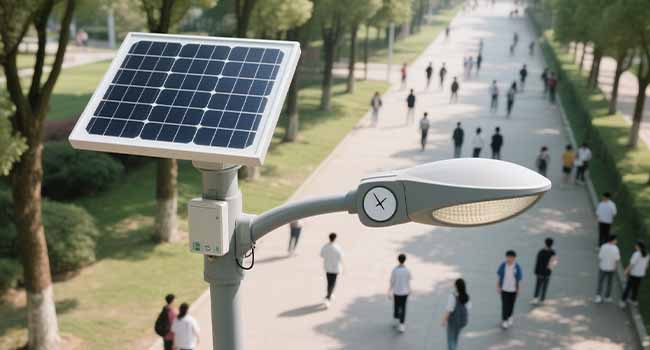
MPPT charge controller
Advantages:
Efficient energy conversion: Conversion efficiency reaches 90%-95%, capturing 15%-25% more energy than PWM controller in -20℃ low temperature or cloudy weather. For example, when the MPPT controller is used for solar street lights in northern winter, the daily charging capacity under -10℃ environment can reach 2.1kWh (only 1.6kWh for PWM under the same condition), which ensures that the street lights will still be lit normally at 4am.
Wide voltage adaptability: supports high voltage panels to connect to low voltage systems (e.g. 36V panels to connect to 12V batteries), allowing solar street lights to use multiple panels in series. Compared with PWM controller, it can reduce the cable specification by 50% (e.g. replacing 6AWG copper wires with 10AWG), reducing the wiring cost by more than 30%.
Strong system scalability: a single 30A controller can be connected in parallel to expand to 600W power, when the solar street light needs to be upgraded (e.g., from 300W to 500W), there is no need to replace the controller, only need to adjust the way the panel is connected, and the cost of expansion is 40% lower than that of PWM.
Intelligent dynamic adjustment: with temperature compensation function, it can automatically adjust charging parameters according to the battery temperature. In the southern summer (40℃), the MPPT controller will reduce the charging voltage to protect the battery, while the PWM controller does not have such a mechanism, which may lead to overcharging and bulging of the battery.
Disadvantages:
High initial cost: the procurement cost of 30A specification is about 2-3 times of PWM controller of the same specification, and the budget pressure of small solar street light projects (such as rural roads) is large.
Complicated installation and commissioning: professional configuration of voltage parameters is required; wiring errors in series connection of multiple panels are easy to burn the equipment, and it is difficult for non-professionals to operate.
Strict heat dissipation requirements: high power operation with high heat generation, pole access door installation requires additional heat dissipation design, otherwise the efficiency drops 10% -15%.
Weak environmental adaptability: wet areas are prone to circuit failure due to water vapor, need to be matched with waterproof housing (such as IP67), increasing additional costs.
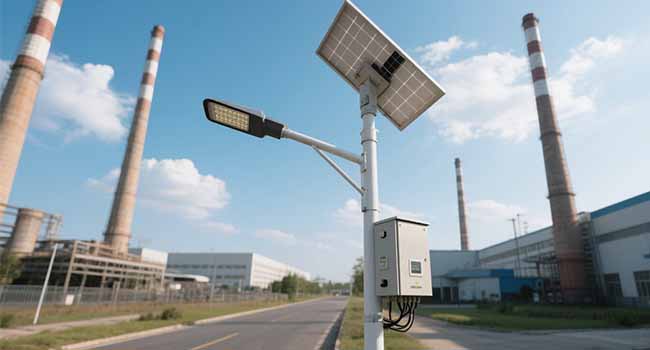
Scenario-based selection
Rural 12V solar street light (no extension): 300W panel + 12V battery (voltage difference 33%), choose 25A PWM controller, balancing cost and basic lighting needs.
City main road 24V solar street light: 300W panel access 24V system, choose 30A MPPT controller, to avoid energy loss of more than 20%, to ensure bright lighting all night.
Solar street light in northern cold area: Prioritize MPPT controller, charging efficiency is more than 25% higher than PWM in -10℃ environment, solving the problem of winter range.
Core parameter comparison table
|
Type |
PWM Controller (Solar Street Light Scenario) |
MPPT Controller (Solar Street Light Scenario) |
|
Efficiency Performance |
75%-85% (Southern warm regions) |
90%-95% (Northern cold or cloudy regions) |
|
Cost Positioning |
Budget-friendly (Rural roads, yard lighting) |
Performance-oriented (Urban main roads, cold regions) |
|
Suitable Scenarios |
12V system, single-day lighting demand (4-6 hours) |
24V/48V system, multi-day continuous rainy day power supply |
Hidden factors affecting controller selection
Battery capacity and lighting hours planning
The battery capacity of solar street light directly affects the controller selection: when configured with 200Ah 12V battery (total storage capacity 2.4kWh), the 300W panel with 20A controller needs to be fully charged in about 8 hours, which can meet the lighting demand of 8 hours/day. If you need to upgrade to 10 hours of lighting (such as street lights in commercial areas), the battery is upgraded to 300Ah, you need to choose 30A controller to shorten the charging time, to avoid the next day due to insufficient power to turn off the lights early.
Influence of climate environment on equipment efficiency
In high temperature and rainy areas, PWM controller efficiency decreases by 10% in the environment above 40℃, it is recommended to choose MPPT controller with cooling fan for solar street light, and utilize the temperature compensation mechanism to reduce the efficiency attenuation. In the cold area of Northeast China, the MPPT controller can still maintain more than 90% efficiency in -20℃ environment, which ensures that the street light is still on normally at 3:00 a.m. in winter, while the PWM controller may be shut down due to low temperature.
Controller installation practical guide
When installing the controller, it is necessary to avoid direct sunlight, and it is recommended to install it in the shadow of the inner side of the access door of the light pole, because the life of the components will be halved when the surface temperature of the controller exceeds 60℃. At the same time to avoid humidity, should choose IP65 or above waterproof controller, in coastal areas also need to increase the moisture-proof box to prevent salt spray corrosion circuit. In addition, the cable needs to be optimized, using more than 10AWG copper wire and a distance of no more than 5 meters, in order to reduce the wire loss from the panel to the controller, to avoid the charging efficiency due to wire resistance.
Choosing a charge controller for 300W solar panels is a balancing act of “efficiency, cost, and environment” in the solar street light scenario. By adhering to the principle of “25% safety redundancy, voltage matching, and climate adaptation” and accurately selecting according to different scenarios, the MPPT controller for urban arterial roads and the PWM controller for countryside paths can light up a lasting, economical, and reliable light for each street light.

